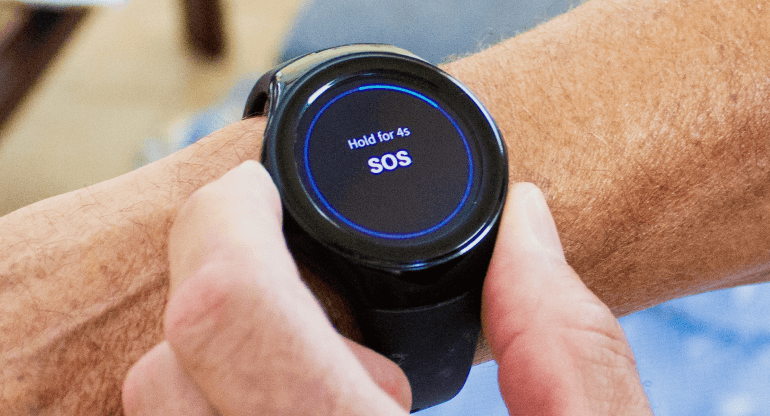Dealing with a medical issue under any circumstance can be difficult for anyone to endure. But receiving improper, unskilled, or negligent treatment from the very medical professional meant to help can take the nightmare to a whole new level. While some types of medical errors are minor, others can be deadly. In fact, medical errors are the third leading cause of death in the U.S., resulting in an estimated 200,000 to 400,000 patient deaths per year and costing the country between $15 billion and $19 billion per year in added medical costs.
We analyzed 10 years of medical malpractice statistics from the National Practitioner Data Bank (NPDB) to see how every state stacks up. Which states have the highest rates of medical malpractice? Which types of practitioners are most frequently involved? Just how severe are the outcomes for patients who fall victim to medical malpractice? And is the situation improving – or getting worse? Read on to find out just how risky it can be to seek medical treatment in your state.
Medical Malpractice Cases Resulting in Death or Major Injury
A subset of tort (a wrongful or harmful act) law that deals with professional negligence, medical malpractice refers to any act or omission by a physician that deviates from accepted norms and causes an injury to the patient. Consequences of improper medical treatment can range from mild to serious to potentially devastating. The worst outcomes, of course, are patient death and significant permanent injury, major permanent injury, quadriplegia, brain injury, and injury that requires lifelong care.
We looked at each state’s statistics during a 10-year period to determine which had the highest rates per capita of medical malpractice cases that result in death or permanent injury. Four of the 5 top states with the highest rates are located in the Northeast. Which state is No. 1? Pennsylvania. More than 64 malpractice cases per 100,000 state residents resulted in death or permanent injury. In one memorable 2007 case, a doctor and nurse at Western Pennsylvania Hospital reached a $23-million settlement with a couple over the birth of their disabled son.
New Jersey, Louisiana, and New York all have rates above 50 per 100,000 residents. Conversely, Wisconsin has the lowest rate: Only eight malpractice cases per 100,000 residents resulted in death or permanent injury. Minnesota and Alabama are also on the low end.
The Best and Worst States for Patients
Next, we analyzed the number of malpractice cases per capita in every state. The high variation in rates in some cases can be explained by differences in medical liability systems among states, the number of attorneys and doctors in a state, the litigiousness of the population, and even the state’s political leanings. Again, 4 of the 5 top states with the highest rates are located in the Northeast. Litigation is frequent in these states, malpractice payouts are high, and tort reform is virtually nonexistent.
New York tops the list with more than 116 malpractice cases per 100,000 residents. One example: In 2013, a Suffolk County couple was awarded $130 million for errors made during delivery that left their daughter with cerebral palsy. New Jersey comes next with nearly 95, Pennsylvania takes third place with just over 92, and Washington, D.C. has nearly 92.
Which states see the fewest malpractice cases per capita? Alabama has the fewest, with nearly 18 cases for every 100,000 people. Next comes Wisconsin with nearly 19, Minnesota with almost 20, and North Carolina with just over 24.
The Most Common Types of Medical Malpractice Cases
The National Practitioner Data Bank (NPDB) splits medical malpractice allegations into the following categories: anesthesia-related; behavioral health–related; diagnosis-related; equipment/product-related; IV and blood products–related; medication-related; monitoring-related; obstetrics-related; surgery-related; treatment-related; and other miscellaneous. We zoomed in on the five most common types of cases – those related to diagnosis, surgery, treatment, obstetrics, and medication – to see how each stacks up per 100,000 residents in every state.
In 4 of the 5 categories, both New York and Washington, D.C. rank in the top two when it comes to most malpractice cases per 100,000. New York sees the most surgery-related cases, the most treatment-related cases, the second-most obstetrics-related cases, and the second-most diagnosis-related cases. D.C. takes the top spot for obstetrics-related cases, as well as second place for treatment-, surgery-, and medication-related cases.
Pennsylvania sees the most diagnosis-related cases per 100,000 – and also comes in third for surgery-related cases, fourth for obstetrics-related cases, and fourth for medication-related cases. Aside from these three medical malpractice hotspots, in which states might it be risky to seek medical treatment? West Virginia makes the top five in the diagnosis-, surgery-, and medication-related categories, and New Jersey makes the list for diagnosis-, treatment-, and obstetrics-related cases.
Four states only made the top five for one category apiece: Michigan takes third for diagnosis-related cases, Montana claims fifth place for surgery-related cases, Kansas comes in fifth for obstetrics-related cases, and Louisiana tops the list for medication-related cases. One case in Louisiana made headlines recently: In 2009, an 8-year-old girl died from the H1N1 virus after her doctors misdiagnosed her illness and didn’t prescribe antiviral medication. Though the jury awarded her mother $8 million, Louisiana law mandates the amount be decreased to $500,000.
Medical Malpractice Cases by Type of Practitioner
The National Practitioner Data Bank (NPDB) collects statistics on types of medical professionals. During the 10-year period we looked at, malpractice claims against nursing practitioners comprised more than 45% of the total. Claims against physicians made up nearly 31%. Dental professionals, therapeutic practitioners, and technicians and assistants saw the third-, fourth-, and fifth-most claims.
A 2015 report by the Nurses Service Organization (NSO) – a provider of professional liability insurance coverage for nurses – asserts that claims against nurses are on the rise. In the NSO study, the vast majority of claims were found to be against RNs rather than LPNs/LVNs.
Trends in Medical Malpractice Cases
The graphic above shows medical malpractice statistics in the U.S. from 2004 to 2014. Although the overall number of cases has seen a decrease over the years, the statistics don’t depict the severity of the cases’ outcomes.
Note that the sharp downward trend reflected in the most recent years may not offer the whole picture; instead, it may reflect the slow nature of legal proceedings or the changes in how tort claims are processed rather than an actual decrease in the number of cases.
Protection for Your Family
Over the past decade, the number of medical malpractice cases in the U.S. has decreased; however, the number of cases that lead to death or permanent injury is alarming. In some states, it’s clear that seeking medical treatment carries serious risks, especially in the areas of diagnosis, surgery, treatment, medication, and obstetrics. In fact, a recent study reveals that most Americans will receive an incorrect diagnosis at least once in their lives. If you believe you have been a victim of medical malpractice, it’s important to seek guidance from a licensed malpractice attorney in your state immediately.
The health and safety of your loved ones is your top priority – and it’s ours too. At Bay Alarm Medical, we’re happy to provide you with timely information and life alert system solutions that enable you to better protect your loved ones. Visit us today to find out how you can get trained medical help with the single push of a button – 24 hours a day, seven days a week – from the country’s top-rated medical alert system.
Methodology
For our state data, we looked at National Practitioner Data Bank (NPDB) Public Use Data File data from 2004 to 2014 and focused on the medical malpractice type and the malpractice outcome, mapping out the beginning year of acts or omissions per 100,000 residents (excluding Puerto Rico, other territories, and the Armed Forces).
For our practitioner pie chart, we looked at NPDB Statistics on Medical Malpractice Payment Reports (MMPR) and Adverse Action Reports (AAR) published for all practitioners between the years 2004 and 2014 (excluding Puerto Rico, other territories, and the Armed Forces).
Sources
http://www.ncbi.nlm.nih.gov/pubmed/23860193
http://www.ncbi.nlm.nih.gov/pmc/articles/PMC2628513/
http://www.bizjournals.com/pittsburgh/stories/2007/06/04/story6.html
https://www.medicalalertbuyersguide.org/best-medical-alert-systems/
http://epmonthly.com/article/the-medical-malpractice-rundown-a-state-by-state-report-card/
http://nypost.com/2013/04/18/this-lawyer-turned-down-8m-and-got-them-130m/
http://www.nola.com/health/index.ssf/2015/02/five_things_to_know_about_medi.html
http://www.npdb.hrsa.gov/forms/NPDBMMPRDraftForm.doc
http://www.nso.com/support/about-us/nso
http://www.nso.com/Documents/pdfs/CNA%20NURSE%20CLAIM%20REPORT%20101615.pdf
http://www.npdb.hrsa.gov/resources/publicData.jsp
http://www.npdb.hrsa.gov/resources/npdbstats/npdbStatistics.jsp
FAIR USE
Feel free to share the images found on this page freely. When doing so, please attribute the authors by providing a link back to this page, so your readers can learn more about this project and the related research. If you’re a journalist hoping to learn more about our work, please contact us at: press@bayalarmmedical.com




















